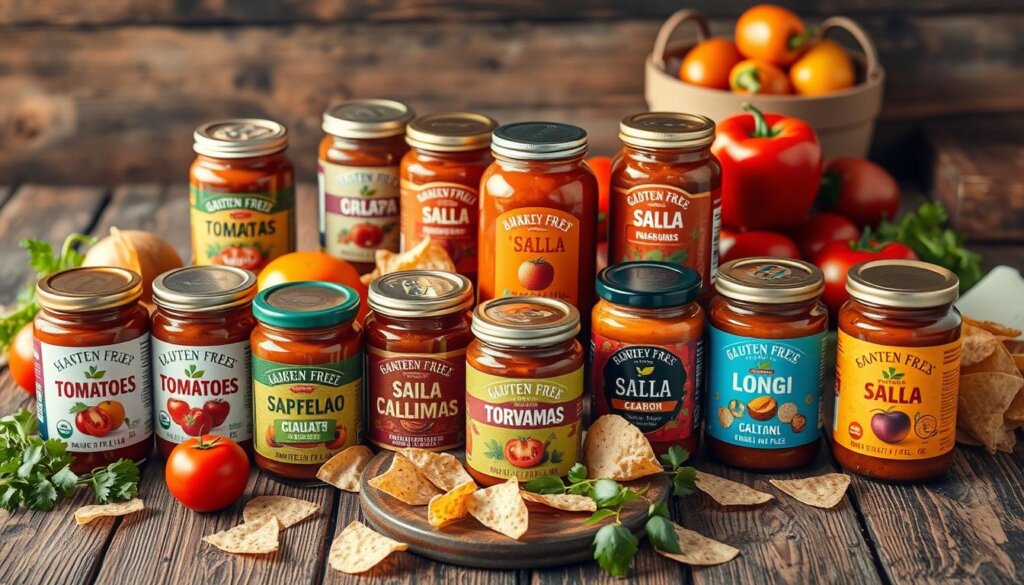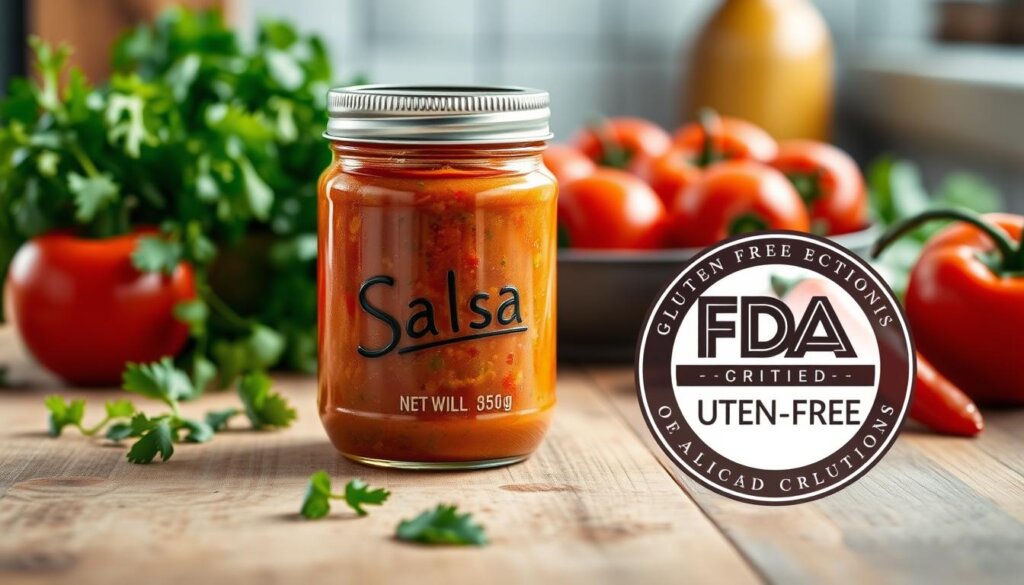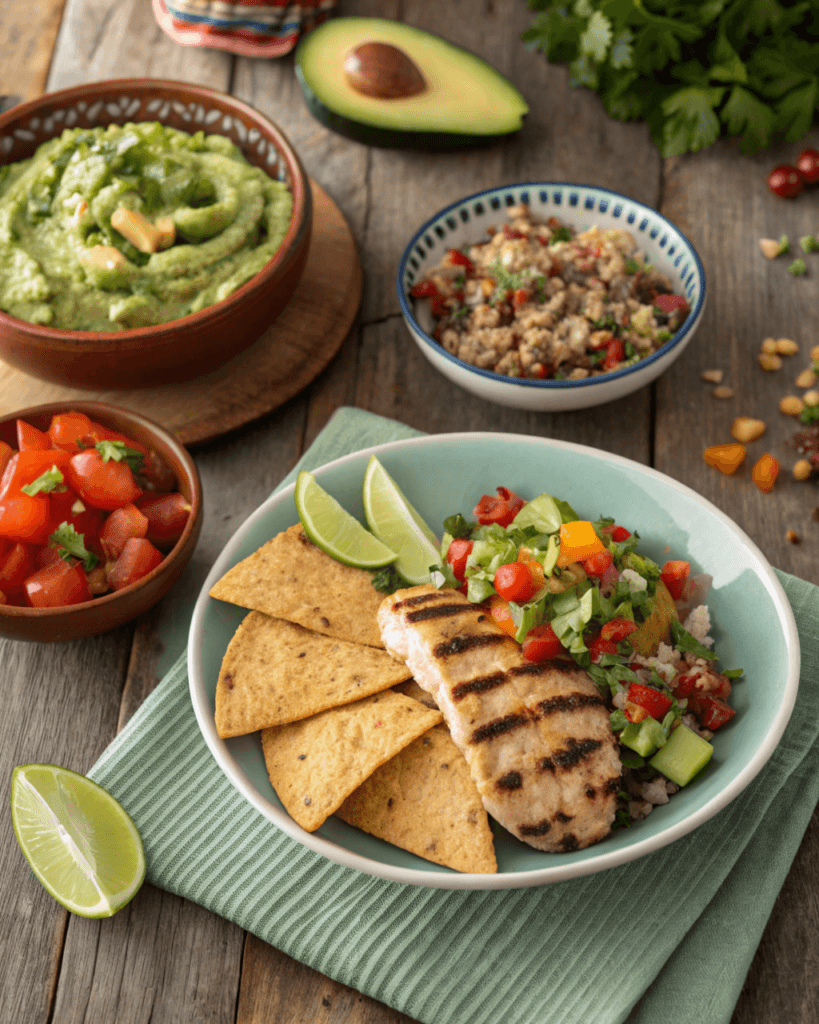Are you wondering if that zesty salsa in your pantry could be secretly sabotaging your gluten-free diet? Dive into the world of gluten-free salsa and discover how to enjoy your favorite condiment without worry.
Salsa has become America’s favorite condiment, surpassing even ketchup in popularity. For those managing gluten sensitivities, understanding the gluten-free landscape of salsa is key. Most traditional salsa ingredients, like tomatoes, peppers, onions, and herbs, are naturally gluten-free.
Your quest for safe salsa options starts with careful label reading. While many brands like Amy’s Kitchen, Frontera, and Green Mountain Gringo offer gluten-free salsa, there’s a risk of gluten contamination. Some salsas may contain hidden gluten sources or be produced on shared equipment with gluten-containing products.
Navigating gluten contamination risks requires vigilance. Not all salsas are created equal, and some brands have stricter gluten-free standards than others. The FDA requires gluten-free products to contain less than 20 parts per million of gluten, providing a baseline for safe consumption.
Whether you prefer mild, medium, or extra hot, there are numerous gluten-free salsa options to satisfy your taste buds. For more gluten-free meal inspiration, check out our guides on gluten-free safe deli choices and gluten-free snacks for celiac diets.
Table of contents
Understanding Gluten in Salsa Products
Exploring salsa can be challenging if you’re gluten-conscious. Many think salsa is naturally glutenless. But, hidden gluten dangers can be found in unexpected places.
Common Sources of Gluten Contamination
Gluten can hide in salsa in many ways. Your go-to salsa might have gluten from:
- Shared processing equipment
- Manufacturing facilities handling wheat products
- Additives like soy sauce or Worcestershire sauce
- Vinegar derived from gluten grains
The Role of Vinegar in Salsa
Vinegar is key in salsa, but not all vinegars are safe. Distilled white vinegar might come from gluten grains. This is a worry for those very sensitive to gluten.
About 13% of the world’s population experiences gluten sensitivity, making ingredient scrutiny essential.
Cross-Contamination Risks
Cross-contamination is a big worry in making salsa. Factories that handle many products can lead to gluten exposure.
| Salsa Brand | Vinegar Type | Gluten Risk |
|---|---|---|
| Desert Pepper | Distilled White | Potential Risk |
| Newman’s Own | Distilled White | Potential Risk |
| Green Mountain Gringo | Apple Cider | Lower Risk |
To stay safe, always check labels carefully. Choose certified gluten-free salsa brands. They work hard to avoid cross-contamination risks.
Popular Gluten-Free Salsa Brands

Finding glutenless salsa can be hard, but many brands offer safe choices. Knowing which brands are certified gluten-free helps you pick the right ones for snacks and cooking.
Some top gluten-free salsa brands include:
- Amy’s: Offers four certified gluten-free salsa varieties
- Mild Salsa
- Medium Salsa
- Black Bean & Corn Salsa
- Chipotle Salsa
- Desert Pepper: Produces 15 unique glutenless salsa flavors
- Frontera: Creates gourmet Mexican-style gluten-free salsas
- Green Mountain Gringo: Certified gluten-free with less than 10 parts per million
When looking for gluten-free salsa, check for brands that say they are glutenless. Cross-contamination can happen during processing, so always read labels well.
“Not all salsas are created equal when it comes to gluten-free standards.” – Gluten-Free Cooking Expert
More gluten-free salsa brands to try include:
- Newman’s Own
- Chi-Chi’s
- Pace
- Tostitos
Pro tip: Even if a salsa looks glutenless, always check the label. Look for certified gluten-free to be sure it’s safe.
Is Salsa Gluten Free: FDA Standards and Certification
Finding gluten-free salsas can be hard. It’s important to know the FDA’s gluten-free rules for those with dietary needs.

Understanding the 20 PPM Standard
The FDA has set clear rules for gluten-free labels. Here are the main points:
- Foods must have less than 20 parts per million (ppm) of gluten
- They can’t have wheat, rye, or barley in them
- Companies must test to make sure products are gluten-free
Gluten-Free Certification Process
There are different groups that check if foods are gluten-free:
- Celiac Support Association (CSA): Needs under 5 ppm
- Gluten-Free Certification Organization (GFCO): Requires under 10 ppm
- Quality Assurance International (QAI): Also needs under 10 ppm
Reading Salsa Labels Correctly
When looking for gluten-free salsa, check these label things:
- Look for “gluten-free” on the label
- Check the ingredients for gluten
- Watch for warnings about cross-contamination
“Always verify the label and certification to ensure your salsa meets gluten-free standards.”
Knowing the FDA’s glutenless rules and reading labels well helps you pick the right salsa.
Creative Ways to Use Gluten-Free Salsa
Gluten-free salsa is a versatile condiment that can transform your meal preparation. It’s not just for chips anymore. You can use it to add flavor and nutrition to your gluten-free meals.

Here are some innovative ways to incorporate salsa recipes into your daily cooking:
- Use as a sandwich spread to replace mayonnaise
- Mix into omelets for a spicy breakfast twist
- Add to tomato soup for extra zest
- Top baked potatoes with fresh salsa
- Enhance gluten-free tacos and burritos
Different salsa varieties can elevate your dishes. Mango or pineapple salsa brings a sweet and tangy dimension. Traditional tomato-based options offer a classic flavor.
“Salsa isn’t just a condiment – it’s a culinary adventure waiting to happen!” – Culinary Expert
Nutritional Insights: Salsa as a Condiment
Salsa offers remarkable nutritional benefits. Most varieties are low-calorie, fat-free, and packed with fresh ingredients. Here are some nutritional highlights:
| Salsa Type | Calories per 1/4 Cup | Carbohydrates | Sugars |
|---|---|---|---|
| Fresh Fruit Salsa | 48 | 13g | 12g |
| Avocado Salsa | 82 | 5g | 1g |
| Peppy Peach Salsa | 30 | 8g | 6g |
Experiment with salsa in your cooking. Discover how this gluten-free condiment can brighten up your meals. It keeps them healthy and delicious!
Conclusion
Your journey through the world of salsa doesn’t have to be complicated. Understanding salsa safety is key for those on a glutenless diet. Most salsas are naturally gluten-free, made from fresh ingredients like tomatoes, onions, cilantro, and chilies.
Making informed choices means reading labels carefully. Be aware of cross-contamination risks. Certified gluten-free brands are the safest choice for those worried about gluten.
Homemade salsa gives you full control over ingredients. You can make delicious, safe condiments that add flavor to your meals. With the right knowledge, salsa can be a vibrant part of your cooking.
Remember, your health and peace of mind are most important. Stay vigilant and make smart choices to enjoy salsa safely on a glutenless diet. Awareness and careful selection are the keys to exploring naturally glutenless salsa options.
FAQ
Is salsa typically gluten-free?
Most salsas are gluten-free because they’re made from tomatoes, onions, peppers, and herbs. But, always check labels for cross-contamination risks and additives.
What brands offer certified gluten-free salsa?
Brands like Amy’s, Chi-Chi’s, Desert Pepper, Frontera, and Green Mountain Gringo offer glutenless salsa. Newman’s Own, On the Border, and Pace also have options. Look for the gluten-free label.
How can cross-contamination occur in salsa production?
Cross-contamination can happen through shared equipment or facilities that handle gluten. Additives like soy sauce or Worcestershire sauce can also be a risk. Vinegar from gluten grains is another possible source.
What does “gluten-free” mean according to FDA standards?
The FDA says a product is gluten-free if it has less than 20 parts per million (ppm) of gluten. The Gluten-Free Certification Organization has even stricter standards, at less than 10 ppm.
How can I use gluten-free salsa in my cooking?
Gluten-fre salsa is great for many dishes. Use it as a sandwich spread, in omelets, or in tomato soup. It’s also good on baked potatoes, in tacos, and burritos. Try unique flavors like mango or pineapple for a twist.
What should I look for when buying salsa if I’m gluten-sensitive?
Look for “gluten-free” labels and check ingredients for gluten sources. Be cautious of shared equipment or facilities. Brands with third-party certifications offer extra reassurance.
Can people with celiac disease eat most store-bought salsas?
While many salsas are gluten-free, those with celiac disease should be careful. Choose salsas with clear gluten-free certification and be aware of production risks.
Are there any specific vinegars to watch out for in salsa?
Vinegars from gluten grains can be a problem for some. Desert Pepper and Newman’s Own use distilled white vinegar. Green Mountain Gringo uses apple cider vinegar, which might be safer.
Is Tostitos salsa celiac safe?
Yes, most Tostitos salsas, including chunky varieties, are gluten-free and safe for celiacs. Always check the label for confirmation.
Are Sun Chips Garden Salsa gluten-free?
No, Sun Chips Garden Salsa are not glutenless as they contain wheat ingredients.
Is thick and chunky salsa gluten-free?
Yes, thick and chunky salsa is generally without gluten, but always verify the ingredients to ensure no gluten-containing additives or cross-contamination.





